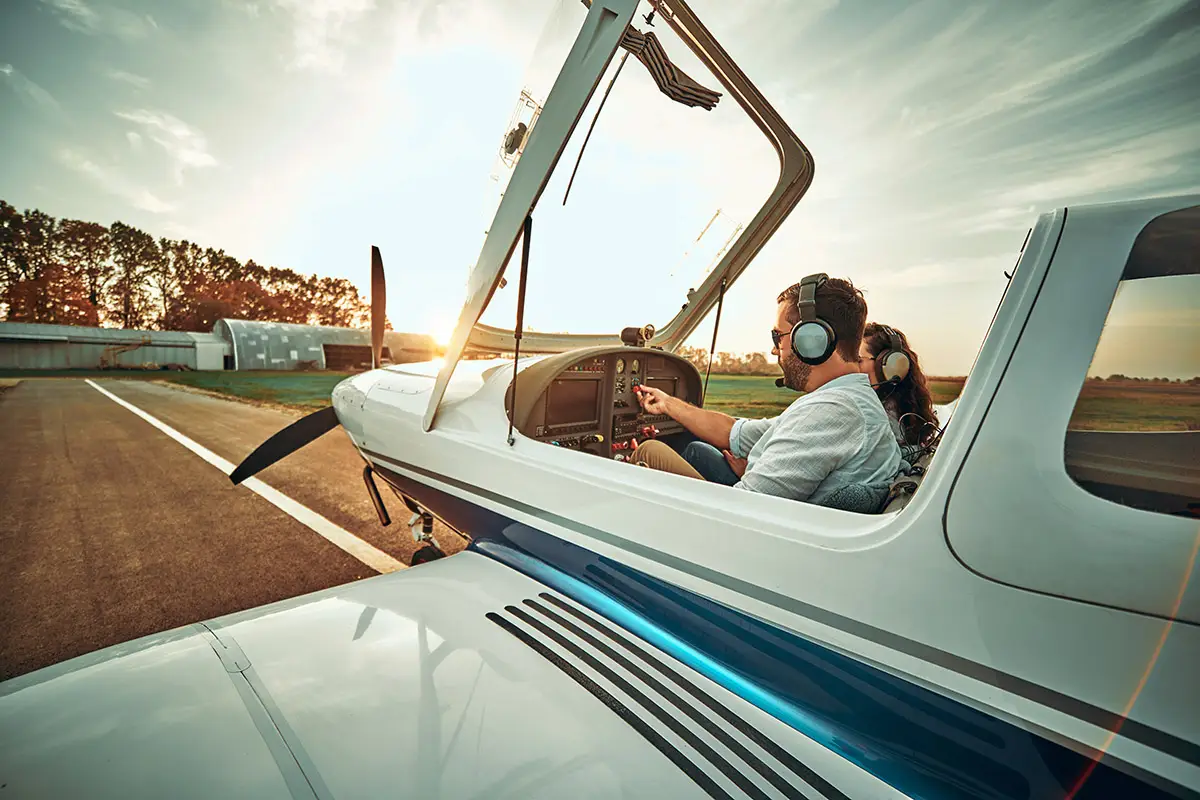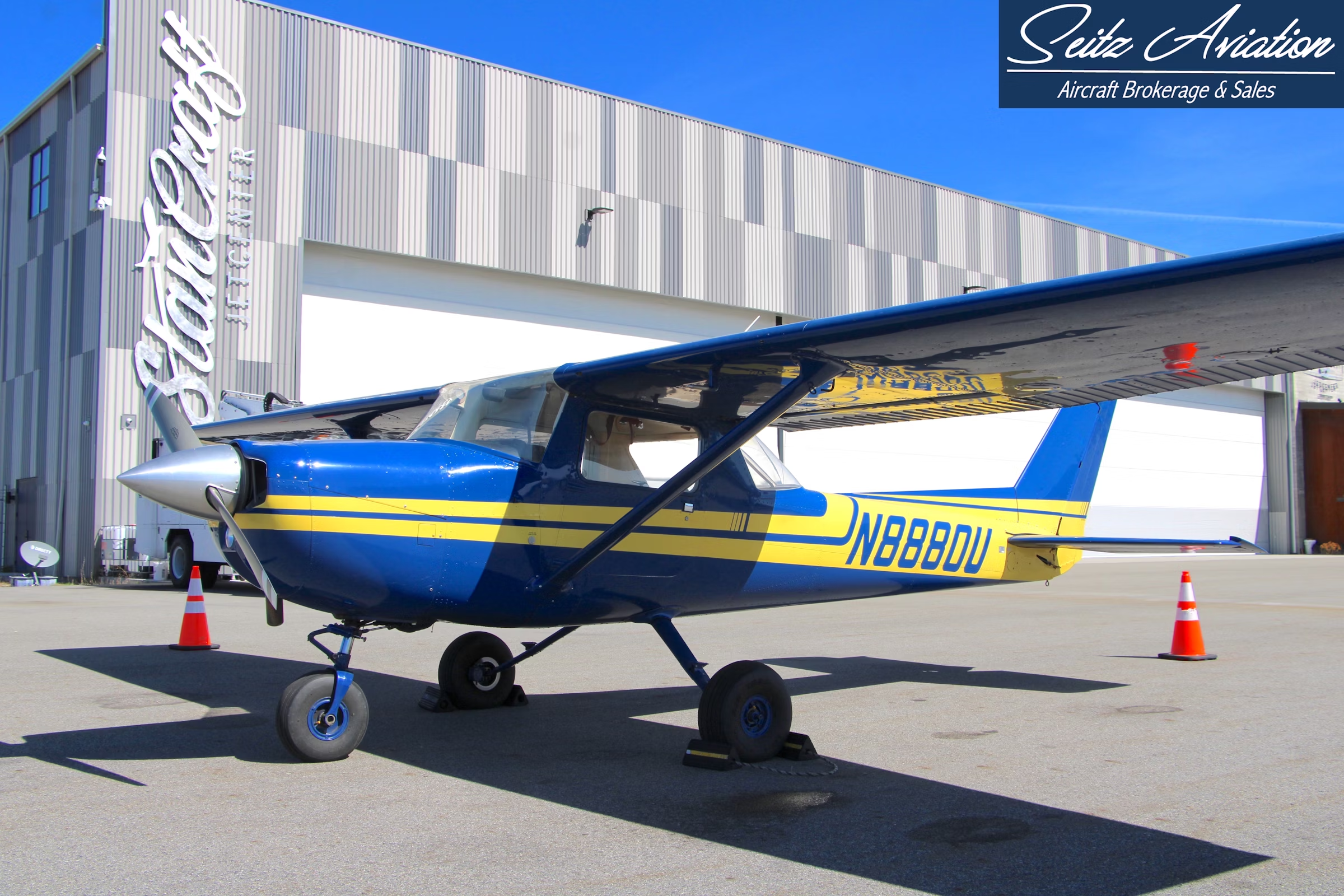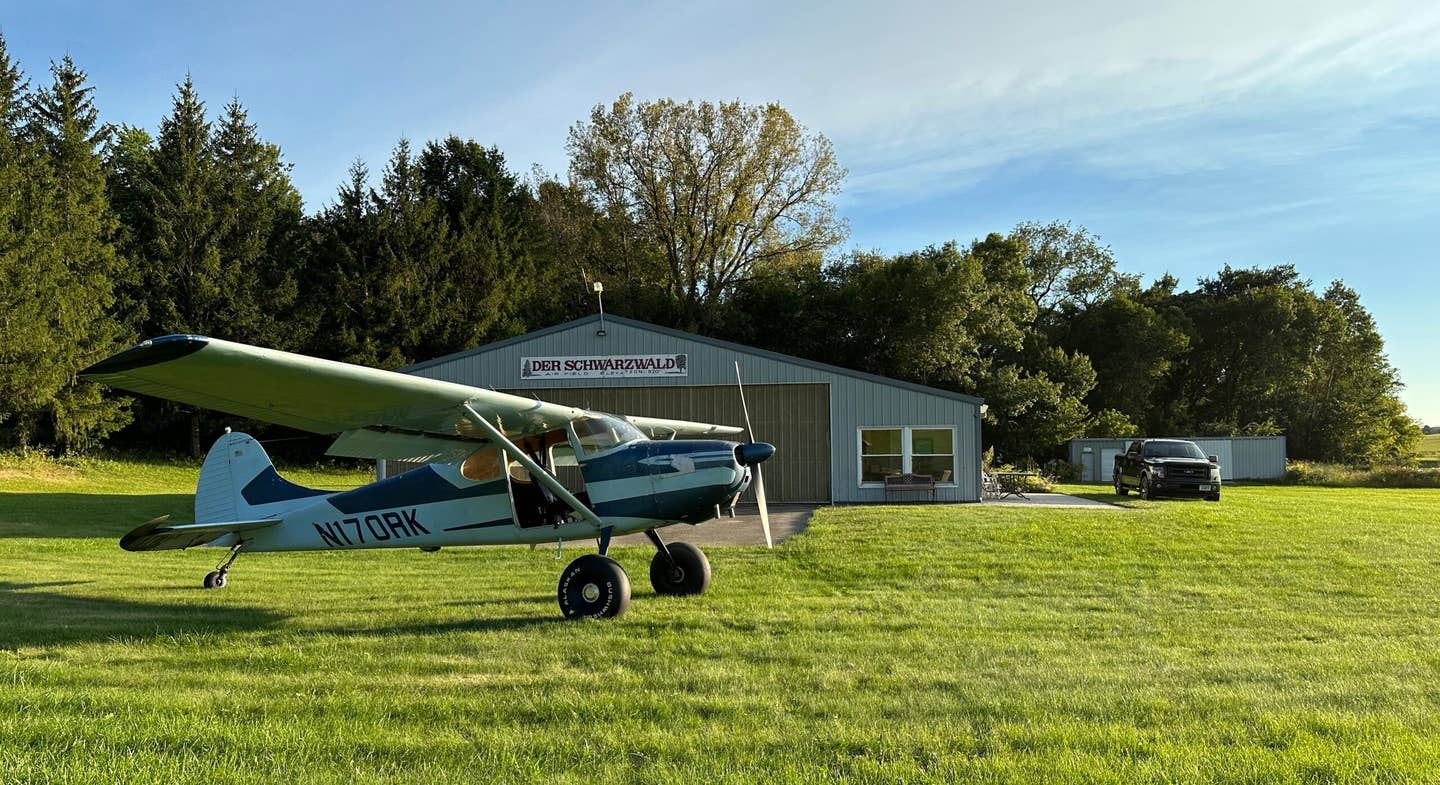5 Biggest Mistakes Student Pilots Make
Here are some tips for avoiding the training traps.

An instructor and a student preflight a Cessna 152 before a lesson. [Credit: Richard Steiger]
Here are the five biggest mistakes student pilots make and how to fix them:
First Mistake
Trying to steer the airplane like you would a car: With the exception of the Ercoupe, there isn't an airplane that this works on. Trying to steer with the yoke on the ground is like trying to flush a toilet by flipping a light switch. Isn't going to work.
The way to fix it: Many CFIs teach their students to taxi by demonstrating how steering on the ground is done with rudder only. It involves the CFI setting the power to taxi speed—a brisk walk—and having their hand over the throttle just in case they need to cut the power as they steer only with their feet on the rudder pedals. The CFI tells the learner to look at the pedals as the CFI taxis so they see the deflection as the CFI serpentines—if it is safe to do so, remarking, "We're going left...now right...now left."
- READ MORE: IFR Training: More Than Just a Requirement
Learners that play a musical instrument that requires footwork, like piano, organ, or drums, or a sport like soccer, will be ahead of the game because they already have a mental connection between their head and feet.
The urge to “drive” the airplane with the yoke only continues into the air. This is called the law of primacy, as you want to do what you first learned. To break this habit, the CFI trims the aircraft for straight and level flight then demonstrates rudder coordination—the old ball in the bracket or stick in the doghouse—by keeping the nose of the aircraft on an object on the horizon and rolling around the axis with the aileron while using the rudder to keep the ball in the center.
- READ MORE: How to Prepare for a Flight Review
Then, the CFI has the learner fold their arms on their chest while the instructor controls the aileron and the student the rudder. The learner has to keep the aircraft coordinated. Another demonstrates a coordinated rudder turn (very shallow bank) doing a 180- or 360-degree turn. It teaches the learner to control pressures. Not stomping on the rudder is all that is needed to maintain coordination. Many CFIs demonstrate an uncoordinated turn—a skid—just so the learner understands what they are, what they feel like, and why we avoid them. One of my students compared it to the "airplane trying to give you a wedgie" because it's so uncomfortable.
Second Mistake
Thinking that prowess at a flying video game means you are a good pilot: While there are some positive transfers, such as the development of an instrument scan and depending on the sophistication of the game, some procedural skills (I have met gamers who use aircraft appropriate checklists). But even with force feedback, control inputs you use in the aircraft will be significantly different than those in the game. This can get potentially dangerous, like the learner who yanks back on the yoke or stick instead of applying throttle to get the airplane to climb. In the airplane this can lead to a stall spin accident, especially on takeoff when the learner grabs with both hands..
- READ MORE: First Solo: What to Know Before You Go
The way to fix it: Your instructor will insist that you keep one hand on the yoke or stick and the other on the throttle during takeoff and will admonish you not to pull too hard. And the smart CFIs will block yoke or stick travel to keep you from yanking it back.
Third Mistake
Overrelying on automation and GPS for navigation: It's easy to punch in "direct to" and when the pink line appears, activate the autopilot. When you start flying the big iron, that's when it's appropriate to do this. In your learning phase this robs you of valuable experience.
- READ MORE: Beware of Aviation ‘Tribal Knowledge’
The way to fix it: Insist on learning how to navigate using pilotage, dead reckoning, VORs, and even ADF if there is one on the airplane and an NDB nearby (this is the aviation version of learning to drive a stick shift). The more navigational tools you have in your knowledge tool kit, the better pilot you will be. There's a time and a place for GPS and autopilot, and it is after you have learned the basics.
Fourth Mistake
Memorizing the check ride, instead of learning the material: This often happens when the CFI administering the training doesn't have much experience as a pilot or as an instructor and was trained by an equally low-time, low experience CFI using the "check-the-box, memorize-the-check-ride" method. This can happen at accelerated schools that have a Designated Pilot Examiner (DPE) on staff or one that is preferred, and as a matter of course uses the same check ride with all the applicants. DPEs are supposed to adapt the check ride to each client, but sometimes the training is "cookie cutter," and there is often a uniformity of learner level of knowledge and performance. While they pass the check ride, the fledgling pilots are ill-equipped outside the training environment. It is like memorizing the answers to the final exam without learning the material in class.
The way to fix it: In addition to memorizing rules, regulations, learn the skills and procedures for safe flight. This can be done using scenario-based training, the "what would do if this happened?" For example, "There is an uncommanded loss of engine power during cruise fleet in a carburetor-equipped aircraft. What action do you take?"
Fifth Mistake
Giving up when you hit a learning plateau: They can be frustrating and expensive, and you may want to quit. Please understand learning plateaus are part of the process. They are like challenges encountered during puberty. We all went through it, and eventually, we all thought we were the only ones having these challenges.
The way to fix it: Break the training cycle by doing a “fun” flight. For example, if you're struggling with landings, fly to another airport and work on pattern entry followed by landings. A change of scenery and application of the skills you have learned in a slightly different environment can be beneficial to get you off the plateau.
Remember, as when looking back on your life experience, it's often the things we didn’t do—like finishing your pilot certificate—that we regret the most.

Sign-up for newsletters & special offers!
Get the latest FLYING stories & special offers delivered directly to your inbox






